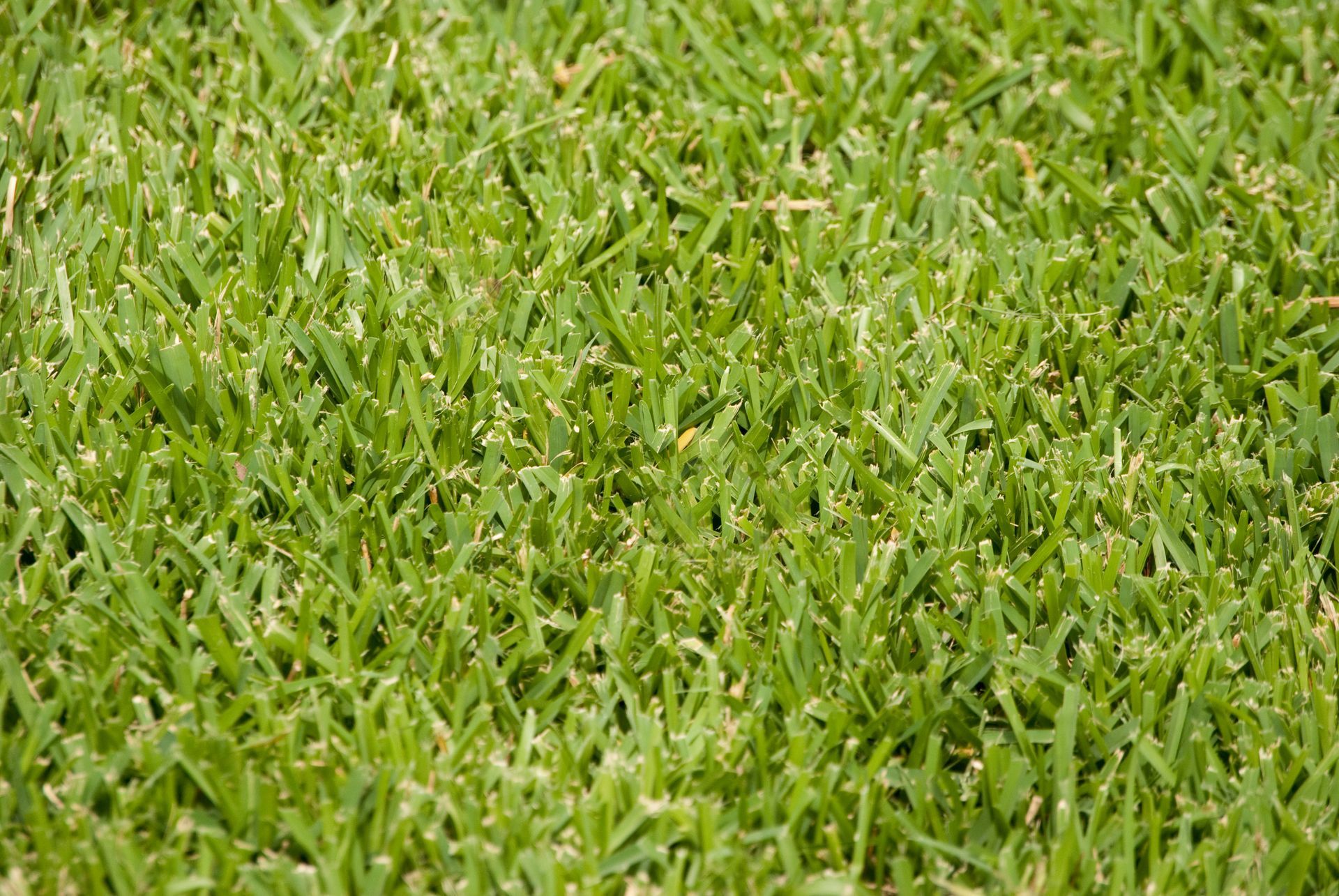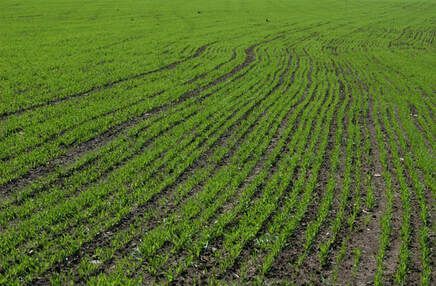Seeding and Sodding
Grass Installation and More
Selecting the appropriate grass for your property in southern Florida is crucial for achieving a lush, resilient lawn that can withstand the region's hot, humid conditions. Grass type impacts not only appearance but also maintenance requirements and tolerance to pests and diseases. Choices like St. Augustine, Bermuda, and Zoysia are commonly used in Florida for their heat tolerance and low water requirements. Factors to consider include soil type, sun exposure, and usage—whether the area will endure heavy foot traffic or serve mostly aesthetic purposes. A well-chosen grass variety sets the stage for a thriving lawn, enhancing both the beauty and value of your property.
Before getting started be sure to check out the mineral content of your dirt with a soil analysis before planting any type of grass to see if you need any fertilizer afterwards. Here are the pros and cons to the grass that is good to grow in South Florida.
Get a quote

St. Augustine Grass
One of the most popular grasses in Florida, St. Augustine grass is used for it’s many coastal advantages. The most important advantage is it’s ability to withstand salt air. It is also great at withstanding the heat, dealing with low quality soil and shady areas. The grass will only withstand low to moderate levels of traffic so an alternative sod will need to be used in high traffic areas. When properly maintained this grass will grow rapidly and will fill in empty spots quickly. The soil must be well draining and constantly fertilized during the summer to keep it growing properly. This turfgrass is also susceptible to pests and disease and should be treated immediately if any are discovered.
St. Augustine Maintenance Notes:
- Maintain frequently and keep the height between 2 to 4 inches.
- Fertilize monthly in the growing season of spring to summer and possible fall. Keep pH between 5 and 8.5. If the pH is too high, then additional iron amendments should be added.
- Water two times a week until it reaches ¾ inch deep in the soil. If it’s a new lawn much more water is needed. A brand new lawn can require water multiple times a day while a couple of weeks later will only need water once a day.
Bahia Grass
Bahia grass is a very good choice for an area with little rain and high heat. This grass can be found in the Gulf Coast and very low South. It is able to live in sandy and nutrient poor soils because of it’s naturally deep root system. This also gives it the ability to last well in drought, outdoing all grass except Bermuda grass. It prefers full sun and can live in areas with poor drainage and more shade. It is a very popular grass for the coastal cities in the south due to these characteristics.
Some other aspects to this fine grass is the ability to thrive. It takes a little longer than other grasses to germinate so growth from a seedling can be longer. However, once it takes root the grass is very strong and establishes well. Keep it free of weeds during the young life and it will prove to be a versatile grass. During the periods of growth Bahia will remain green. When there are periods of drought, the grass may turn brown. This is short-lived and once the conditions return, the green will return also. This usually occurs in early spring before most other grass.

Bahia Maintenance Notes
- Typically, seeding should be done from summer to spring but in Florida the fall season will usually also result in a decent growth period as long as there is no cold temperatures.
- When mowing stick to 2”-3” tall. Seedlings form quite rapidly into a V-shape and will change the appearance of the lawn. Preference of lawn appearance will determine the frequency of mowing. Never cut more than one third of the leaf blade to avoid stress.
- The soil must have a pH of 5.5 to 6.5. Anything higher than 7 will result in an unhealthy appearance of yellow.
- Over-watering Bahia grass will weaken it leaving it prone to different diseases.
- Fertilizing is best done in the growth season (spring, summer, fall). Choose a fertilizer that specifies it's safe for Bahia. Some fertilizers carry chemicals that can be harmful.
Bermuda Grass
Tough and Durable
Another popular option for dry climates is Bermuda grass. The grass needs lots of sun and does well in tropical or sub-tropical areas. The large root system gives it the ability to last in these areas with harsh conditions. Bermuda is used in many southern areas and strong against different pests and disease. However, in Florida the sting nematode is very common and targets the root system of this grass keeping it from growing effectively. Bermuda is quite versatile and will grow quite easily where this pest is not present. It can grow so well that it may crowd other plants in the same area. This grass is often used in different sporting arenas such as football, baseball and golf.
Bermuda Maintenance Notes
- Seed in summer to spring when the temperature is from 90 – 100 degrees (F). They germinate within 10 days and be fully grown within 90 days.
- Maintain frequently. The growth can be rapid in growing seasons so the frequency of cuts should keep it around ½ to 1 ½ inches.
- Fertilizing should be done two weeks after the lawn has turned green in the spring season. The three most necessary nutrients needed: Nitrogen, Phosphorus and Potassium should be applied according to your needs. This nutrient ratio can be checked on the packaging and should fall within the ratio of 4-1-2 (Also displayed as (305) 363-6709 or (305) 363-6709 or 3-1-2. Ideally you would have done a soil sample to identify fertilizer needs.
- The grass does well without water but still requires irrigation to grow after periods of dormancy and to overcome any trouble spots.
Zoysia Grass
A more resilient grass, Zoysia can be planted from the transitional zone down to the warm-season climates. If your climate fits the mold then this grass will require very little maintenance and upkeep. Zoysia grass is very drought tolerant, can handle high heat and requires less water than Centipede. Another added benefit is the ability of this grass to handle high trafficked areas. If the conditions are right, it will continue year after year.
The thickness of Zoysia grass causes it to take longer to establish itself into a thriving lawn. The root system is quite large which gives it the ability to retain water and sustaining itself through drought. This durable grass grows in high heat and also shade. It will go dormant later than other grasses and will be the first to grow again. It's thickness requires proper maintenance and removal of all thatching. Aerating the lawn will allow it to grow properly and with enough irrigation will grow a deep and strong root system.
NOTES:
- Mow to a height of 0.5 to 1.5 inches
- Fertilize to keep the pH between 5.8 and 7.0.
- Water infrequently for longer periods of time to establish a strong root system. If you notice discoloring, you may need to water more often. This can be the case for more sandy soils.
Centipede grass
For people that are looking for minimum upkeep, centipede grass might be the best option. There are strict requirements for this grass to thrive but when it does, it takes care of itself. Centipede grass does well with sandy soil and little nutrient content. It can also withstand high levels of heat. The only thing it needs is more water than other grasses that grow in the same climate. The root system is quite small so adequate levels of water are necessary to keep it growing green. The soil can be as low as 4.5 to 6 pH and may require a soil amendment to keep it iron rich. This can be seen when the blades turn yellow. Otherwise, the grass can stay green all year long and does not go dormant.
NOTES:
- Requires less mowing than other types because it takes the longest to grow out of the other warm-season grasses. Maintain a height of 1 ½ to 2 ½ inches.
- A lawn that has already been established does not require much fertilizing. A soil test will determine if any additional fertilizing is necessary. Do not fertilize too much or it can leave this grass susceptible to disease.
- Water sufficiently. Watering for longer periods will create longer roots and give strength towards disease. Little water means little roots and more stress leaving your lawn weak.

